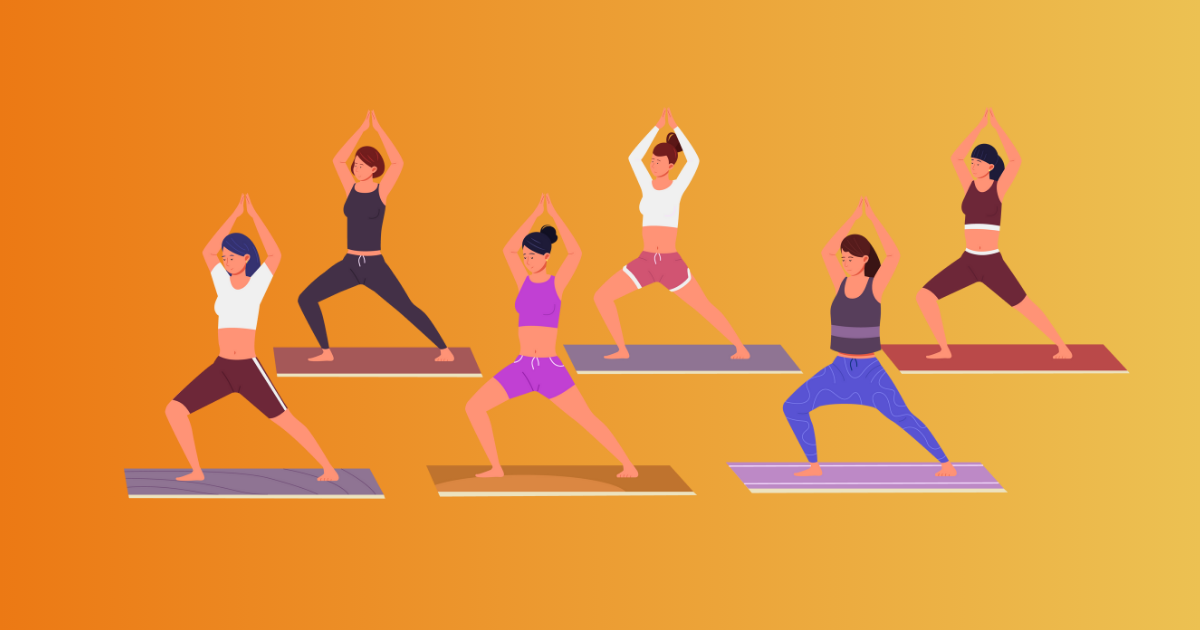Discover the benefits of aerobic activity.
Thinking about your fitness goals? You might wonder why aerobic exercise is special. Does regular aerobic activity really change your health and wellbeing? The answers are yes, and it’s a big yes.
Regular aerobic exercise boosts your heart health, energy, and mental state. It’s a game-changer for your lifestyle. By adding aerobic exercise to your daily life, you’ll see real changes. From more energy to better mental health, the benefits are clear.
Key Takeaways
- Regular aerobic activity can improve your cardiovascular health
- Aerobic exercise can increase your energy levels and reduce fatigue
- Engaging in aerobic activity can enhance your mental wellbeing and reduce stress
- Incorporating aerobic exercise into your routine can improve your overall physical fitness
- Aerobic activity can be adapted to suit different fitness levels and goals
- Understanding the benefits of aerobic activity can help you make informed decisions about your fitness routine
Understanding Aerobic Activity: The Foundation of Fitness
Exploring fitness means learning about aerobic and anaerobic exercises. Aerobic activities like jogging or cycling need oxygen to work. This is different from anaerobic exercises, which don’t need oxygen. Aerobic exercises are great for heart health and building endurance.
Aerobic exercises use oxygen to turn glucose into energy. This is key for long-lasting physical activity. On the other hand, anaerobic exercises like weightlifting use stored energy and don’t need oxygen. Knowing the difference helps in planning a good fitness routine.
What Defines Aerobic Exercise
Aerobic exercises use oxygen to make energy. They are usually not too hard and can be done for a long time. Examples include brisk walking, swimming, and dancing. These activities boost heart health, endurance, and burn calories.
The Science Behind Oxygen Utilisation
The science of aerobic exercise is about using oxygen to make energy. When you do aerobic exercise, your body takes in more oxygen. This helps turn glucose into energy more efficiently. This is vital for long-lasting physical activity.
How Your Body Responds to Aerobic Movement
Regular aerobic exercise changes how your body uses oxygen and energy. It makes your heart and muscles work better. This improves your health and fitness, making daily activities easier. Adding aerobic exercise to your routine brings many benefits, like better heart health and endurance.
The Essential Benefits of Aerobic Activity
Regular aerobic activity boosts your health and wellbeing. It offers many benefits that can change your life for the better. Aerobic exercise improves your heart health, boosts energy, and helps your mind.
Some key benefits include:
- Improved cardiovascular health, reducing the risk of heart disease and stroke
- Increased energy levels, making it easier to tackle daily tasks and activities
- Enhanced mental wellbeing, reducing stress and anxiety
- Better quality sleep that leads to better sleep and recovery.
Regular aerobic exercise also builds aerobic endurance. This is crucial for staying healthy and active. It helps your body use oxygen better and generate energy. This boosts your fitness and wellbeing, letting you tackle new challenges confidently.
As you keep up with aerobic exercise, your health and wellbeing will improve. The benefits of aerobic are clear and lasting. By prioritizing aerobic exercise, you can control your health and achieve your goals.
Aerobic vs Anaerobic Exercise: Understanding the Difference
Two main kinds of exercises that are aerobic and anaerobic. Knowing the difference is key to a good workout plan. Aerobic activities like jogging or cycling boost your heart health and endurance. Anaerobic exercises, like weightlifting or sprinting, focus on building muscle and strength.
Aerobic exercises use oxygen to create energy, making them lower-intensity and longer. Anaerobic exercises don’t use oxygen, so they’re high-intensity and short. For instance, aerobic exercise examples include running long distances, swimming, and dancing, which enhance cardiovascular health and endurance.
Energy Systems Explained
Aerobic and anaerobic exercises use different energy systems. Aerobic exercises rely on oxygen for energy, suited for long, low-intensity activities. Anaerobic exercises don’t need oxygen, making them perfect for short, intense activities.
Impact on Muscle Development
Aerobic and anaerobic exercises affect muscles differently. Aerobic exercises improve muscle endurance, while anaerobic exercises build strength. For example, running long distances is an aerobic exercise that boosts endurance. Weightlifting, on the other hand, is an anaerobic exercise that increases strength.
| Exercise Type | Energy System | Muscle Development |
| Aerobic | Aerobic energy system | Muscular endurance |
| Anaerobic | Anaerobic energy system | Muscular strength |
Knowing the difference between aerobic and anaerobic exercises helps tailor your workout. Whether you aim for better heart health or muscle strength, picking the right exercise is crucial. Mixing aerobic vs anaerobic exercises in your routine leads to a balanced fitness level and better health.
Building Your Aerobic Endurance
To boost your aerobic endurance, start with a workout plan that fits your life and goals. Aim to train for 30 minutes at least three times per week. As you get better, increase the time and how often you work out.
Being consistent and patient is crucial. Regular exercise boosts your heart health, energy, and overall wellbeing. Adding aerobic training to your routine can greatly improve your life quality.
Here are some tips to enhance your aerobic endurance:
- Begin with gentle workouts and slowly make them more intense and longer.
- Pay attention to your body and rest when needed to avoid injuries or burnout.
- Keep track of your progress and tweak your routine to keep challenging yourself.
By sticking to these tips and making aerobic exercise a habit, you can boost your endurance. Stay consistent, be patient, and celebrate your achievements.
Popular Forms of Aerobic Exercise for Every Fitness Level
Exploring aerobic exercise reveals a variety of activities for all levels and interests. From gentle to intense, there’s something for everyone. Regular aerobic activities boost heart health and energy.
Low-Impact Options
Low-impact exercises are great for beginners or those with mobility issues. They’re easy on the joints and can be adjusted to fit your fitness level. Walking, swimming, and cycling are popular choices. They help improve heart health and endurance.
Moderate-Intensity Activities
Moderate-intensity exercises are perfect for those looking for a challenge but not too hard. They burn calories, enhance heart health, and boost endurance. Dancing, jogging, and jumping rope are favourites. They offer mood boosts and more energy.
High-Intensity Aerobic Workouts
High-intensity workouts are for those who want to really challenge themselves. They improve heart health, increase endurance, and burn calories. Running, HIIT, and boxing are top picks. They enhance physical fitness and mental toughness.
| Aerobic Exercise | Intensity Level | Benefits |
| Walking | Low-Impact | Improved cardiovascular health, increased energy levels |
| Jogging | Moderate-Intensity | Weight loss, improved mood, increased endurance |
| Running | High-Intensity | Improved physical fitness, increased mental toughness, weight loss |
Conclusion: Making Aerobic sport Part of Your Lifestyle
Starting to enjoy aerobic exercise is more than just a quick fitness fix. It’s about changing your life for the better. By adding aerobic exercise to your daily life, you open up a world of benefits that last a long time.
Doing aerobic exercise regularly can really help your heart health. It lowers the chance of heart disease, stroke, and high blood pressure. It also gives you more energy, makes you think clearer, and helps you stay at a healthy weight. All these things make life happier and more lively.
The important thing is to make aerobic a lasting part of your life. Find exercises you love and can keep doing. You could go for a fast walk, cycle, or dance. There are so many fun ways to stay active.
Try out different activities to find what gets you excited. As you do, you’ll see the great benefits of an active lifestyle. Your body and mind will be grateful for the long-term gains of regular exercise.
FAQ
What is aerobic exercise?
Aerobic exercise makes your heart rate go up and uses more oxygen. It’s a way to get fit by using oxygen to make energy.
How does aerobic exercise differ from anaerobic exercise?
Aerobic exercise uses oxygen to make energy. Anaerobic exercise doesn’t need oxygen and uses stored carbs instead.
What are the benefits of aerobic exercise?
Aerobic exercise is good for your heart, increases endurance, and helps with weight management. It also boosts your mood and reduces disease risks.
How can I build my aerobic endurance?
Start with regular aerobic activities like brisk walking or cycling. Begin with short sessions and increase the time and effort. Aim for 30 minutes daily, most days.
What are some examples of aerobic exercise?
Aerobic exercises include running, cycling, swimming, and dancing. These activities make your heart rate and breathing faster.
How can I determine the intensity of my aerobic workout?
Check your heart rate to see if you’re working hard enough. Aim for 50-85% of your maximum heart rate. You can find this by subtracting your age from 220.
How often should I do aerobic exercise?
Aim for 150 minutes of aerobic activity weekly. This is about 30 minutes daily, most days. Adjust based on your fitness and health.







